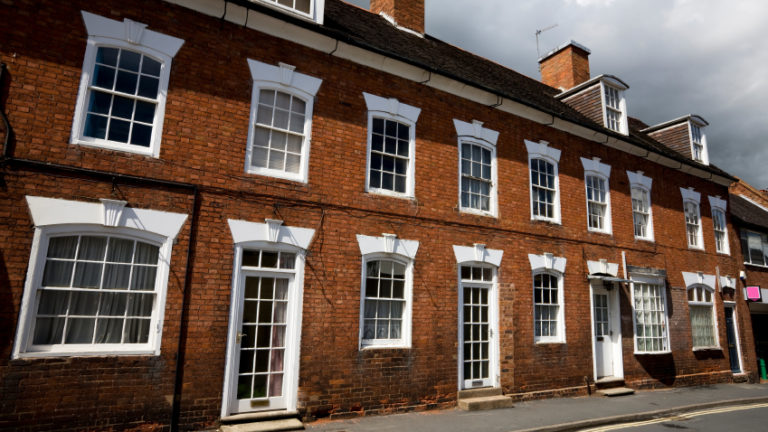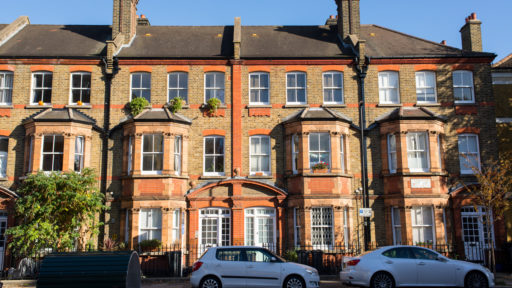Advice for accidental landlords

Every year, thousands of people in the UK become accidental landlords, falling into renting out their property.
It can be a daunting experience for those who never planned to become a landlord, with a raft of rules and regulations to negotiate, not to mention tax implications, dealing with tenants, and ensuring you have the right insurance cover.
While statistics show 43% of landlords own one rental property, representing 20% of all tenancies, a surprisingly large number of landlords don’t become landlords by choice, with 35% having initially bought their first property to live in themselves.
Estimates vary on how many accidental landlords there are in the UK but range from 10% to 30% of all rental properties. In this article, we look at the responsibilities and risks that come with being an accidental landlord.
- What is an accidental landlord?
- How to register as a landlord and pay taxes on your rental income
- How to comply with health and safety regulations and standards for your property
- How to find and screen tenants and create a tenancy agreement
- How to deal with missed rental payments, deposits, repairs, and maintenance
- How to handle disputes, evictions, and end of tenancy issues
What is an accidental landlord?
The term ‘accidental landlord’ suggests that you have found yourself possessing a home you rent out, not because you set out to become a landlord but because of unforeseen circumstances.
How can you become an accidental landlord?
People become accidental landlords for a number of reasons, leading them to rent out a property unexpectedly, including:
- Moving in with a partner and having a ‘spare’ house or being unable to sell it.
- Starting a job in a different part of the UK or abroad and renting out their property while they’re away.
- Inheriting a property and deciding to keep it.
- Economic circumstances, such as being unable to pay your mortgage.
Do I need to change my mortgage when I become a landlord?
Like insurance, you must inform your mortgage provider that you are renting out your property. Standard residential mortgages are not suitable for a rented property, although your existing lender may permit you to rent for a limited period under your existing mortgage.
Failing that, you’ll need to switch to a buy-to-let mortgage. You can expect to pay an arrangement fee, and there may be penalties for ending an existing fixed-rate deal early. Also, your new interest rate may differ from your current one.
Be aware that interest rates on buy-to-let mortgages are often higher than standard mortgages, as are arrangement fees, and you may be offered a lower loan-to-value ratio than on a conventional mortgage.
If you’re looking to rent out a leasehold property, check the terms of your lease, as some do not permit subletting.
As an accidental landlord, do I have to pay additional stamp duty if I buy a house?
If you decide to retain your current property when you buy another home, you’ll be liable to pay a higher rate of stamp duty on your new property, meaning you’ll generally have to pay 3% in addition to the standard rate for the price bracket of the property you’re buying.
What landlord obligations do I need to adhere to?
Even though you might not have set out to become a landlord, you still have the same obligations to your tenants as any other landlord. In this section, we look at the key issues you need to be aware of.
How to register as a landlord and pay taxes on your rental income
Register as a landlord
In England, certain local authorities require you to register as a landlord, which can involve paying a fee to the local authority.
Registration is a legal requirement in Northern Ireland, Scotland (although there are exemptions) and Wales.
Paying the tax on your rental income
Like any other income, accidental landlords are liable to pay tax on their rental income.
You’ll need to complete an annual self-assessment declaration, with any rent you receive subject to income tax.
You can deduct certain ‘allowable expenses’ from your income to reduce your tax burden, including the costs of:
- insurance
- letting agent and accountant’s fees
- maintenance and repairs
- business costs, like running an office, stationery etc.
Read our extensive landlord tax guide for more detail on the tax implications.
Landlord insurance
If you live in your property or have recently moved out, you will likely have a standard home insurance policy covering your building and contents.
This policy will not cover you once you start renting out your property, and you must inform your insurer of the change in circumstances and take out a new policy on the correct basis.
There are a few things to consider on the insurance front, depending on whether your property will be empty, undergoing renovation, or rented out immediately.
- Unoccupied property. You need to tell your insurer if your property is unoccupied. Most insurers restrict cover for homes left empty for more than 30 days, so you will need specific unoccupied property insurance, available for between one and 12 months.
- Renovations. Similarly, if your property is undergoing renovations before being let to tenants, you will need home renovation insurance.
- Landlord insurance. Once your property is let to a tenant, you will need a dedicated landlord insurance policy, which covers your buildings but can also include any furniture or other contents you provide. Your tenants are responsible for insuring their own contents. Landlord insurance is not a legal requirement, but buildings insurance is likely a requirement of your mortgage if you have one.
- Rent guarantee insurance. Provides cover if a tenant defaults on their rent, including any legal costs you may face for evicting a tenant.
How to comply with health and safety regulations and standards for your property
Make sure the property is safe to rent
There are certain legal safety requirements that come with being a landlord, including having the appropriate landlord certificates, as you are responsible for the safety of your tenants. While the list below isn’t exhaustive, as legislation can change, it highlights the main responsibilities. For the most up-to-date guidance, please consult the relevant Government site for your country; England, Scotland, Wales or Northern Ireland.
Gas safety: you must have all gas appliances, pipes, and flues checked annually by a Gas Safe engineer and provide the CP12 certificate to tenants when they move in and annually for the length of their tenancy.
Electrical safety: a full electrical safety inspection must be carried out by a qualified engineer at the start of the tenancy and every five years thereafter. Any work required must be completed within 28 days. Any appliances supplied, like fridges or toasters, must be in a safe condition throughout the tenancy.
Energy Performance Certificate (EPC): you must provide tenants with an EPC, which measures the property’s energy efficiency, either at the viewing or before the tenancy agreement is signed. Only properties with a “pass grade” of E or better can be rented out.
Fire safety: you must fit at least one working smoke alarm per floor, fit a working carbon monoxide monitor in any occupied rooms with a fixed combustion appliance, repair or replace faulty smoke and carbon monoxide alarms when informed of the fault, and ensure that any furniture provided meets the fire resistant requirements Furniture and Furnishings (Fire) (Safety) Regulations 1988.
Legionella risk assessment: you must conduct a risk assessment under the Control of Substances Hazardous to Health Regulations (2002).
How to rent: in England, you must provide tenants with an up-to-date copy of the How to rent guide, while Scotland and Northern Ireland have their own versions.
Fit for human habitation: your property must be “free of hazards which are so serious that the dwelling is not reasonably suitable for occupation in that condition”. Such hazards include damp, poor ventilation, problems with drainage and hot and cold water supply, and an unsafe building or layout.
Read our complete guide to landlord responsibilities for more detail.
How to find and screen tenants and create a tenancy agreement
Finding and screening tenants
You’ll need to think about how to find a good tenant, but first, you need to decide on how much rent to charge. Check out property websites to gauge the market rate for similar properties in your area and set your rent at a comparative figure.
You’ll need to use a letting agent to advertise on Rightmove or Zoopla, as they don’t allow adverts directly from private landlords.
Undergo Right to Rent checks
In England, you must, by law, carry out right to rent checks for all prospective tenants over the age of 18 before you can rent a property to them. You may be able to check a tenant’s right to rent online. There is no requirement to check a tenant’s right to rent in Scotland, Wales, or Northern Ireland.
Reference your tenants
Tenant referencing isn’t a legal requirement, but every landlord should consider carrying out some kind of referencing to help minimise the risk of getting a troublesome tenant. It’s also worth remembering that if you have rent guarantee insurance, you must reference your tenants for it to be valid.
Get a tenancy agreement in place
There are several types of tenancy, but whichever you go for, you should always use a written tenancy agreement, signed by both parties, which sets out the rental terms.
Most rental agreements are Assured Shorthold Tenancies (AST), which must be for a minimum of six months but can be for longer. A new term can be fixed at the end of the agreed period, or the tenant will move on to a periodic tenancy.
The tenancy agreement covers everything related to the tenancy, such as the rent amount, notice periods, and who is responsible for maintenance.
The government provides guidance and examples, but new landlords should take advice from an expert.
How to deal with missed rental payments, deposits, repairs, and maintenance
Put together an inventory list
Make sure you compile a full property inventory with photographs for anything you provide as part of your rental property.
The inventory provides a snapshot of the condition of the property and its contents at the start of the tenancy and helps to avoid disputes further down the line. It should be agreed upon and signed by both the landlord and the tenant.
Ensure your tenants’ deposit is placed in a deposit protection scheme
If you rent out your home on an AST and you choose to take a deposit, you must place it in a government-backed tenancy deposit scheme (TDP) within 30 days and provide the prescribed information to the tenant. There are three TDP options in England and Wales: Deposit Protection Service, Tenancy Deposit Scheme, and My Deposits.
If your tenant is using a deposit replacement scheme, you do not need to provide them with the prescribed information as these schemes do not fall under the same legislation as a traditional tenancy deposit.
Missed rental payments
Unfortunately, tenants sometimes miss their rental payments, often due to circumstances beyond their control, such as the loss of a job or disruption to their work if they are self-employed. Taking out rent guarantee insurance (also known as rent protection insurance) can help make sure any issues they face don’t have a knock-on effect on your income.
How to handle disputes, evictions, and end of tenancy issues
Dealing with tenant’s disputes
Fingers crossed, having completed a tenant referencing process and carrying out regular inspections, you won’t encounter any problems with your tenants.
But there’s no guarantee issues won’t come up, and you need to be prepared for them. Be firm but fair with tenant requests, don’t allow repeated late rent payments, and seek legal help if you have a serious problem with a tenant.
If you have legal expenses insurance or rent guarantee insurance, you should always advise your insurer of late payments or any other issue which may give rise to a claim.
Dealing with evictions
Don’t be hesitant to legally evict a tenant who is causing problems; otherwise, the stress they cause will grow and could cause you further problems. Our guide to evicting a tenant shows you how to go about it.
End of tenancy checks
The end of tenancy inspection is essential for you as a landlord and your tenant, as you’ll want to make sure your property is in the same state of cleanliness as it was at the start of the tenancy.
You may decide to use an independent inventory clerk to complete these checks, which can mitigate any allegations of bias, or you may decide to use date-stamped photographs to compare things.
You could also consider assessing the property a day or two before the tenant is due to vacate, as this gives them time to address any issues before your final inspection on leaving day.
If the state of the property is unacceptable and not as clean as when the tenant moved in, the landlord can claim via the deposit protection scheme that holds the deposit. If you are using a deposit replacement scheme, you can lodge a dispute with the provider.
Either way, you’ll need to consider what level of end of tenancy cleaning is required to get your property ready for your next tenant.
We have lots more info available if you’d like to dig deeper into landlord responsibilities and excellent landlords insurance and landlords building insurance.
This article is intended as a guide only. Please note that legislation does change, it is always best to check the most up to date guidance on www.gov.uk. Most landlord insurance policies arranged by Alan Boswell Group also have access to a legal advice helpline where policyholders can seek further advice. Please note Alan Boswell Group does not provide mortgage advice.






